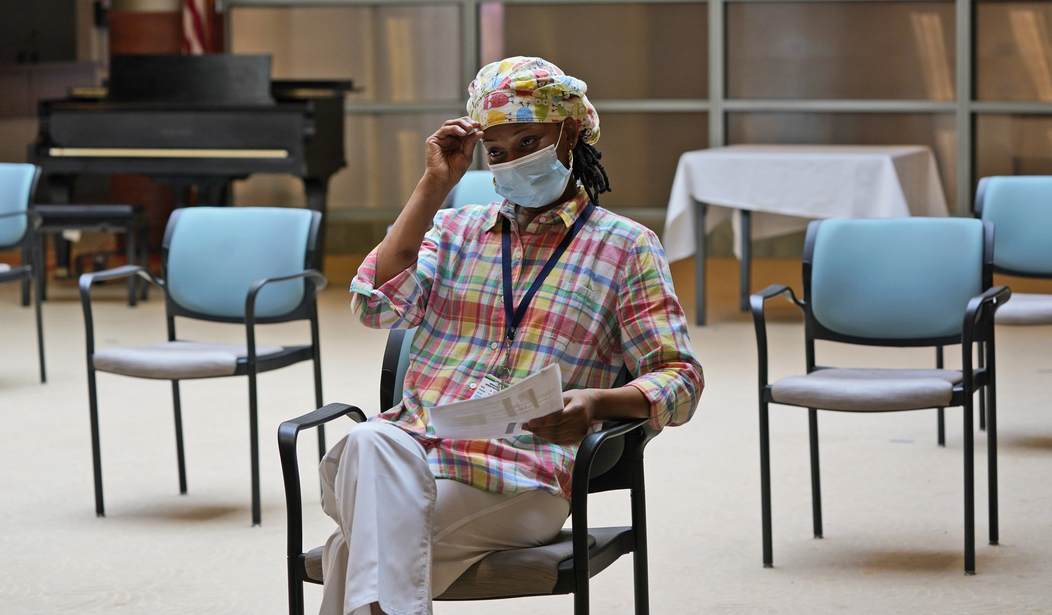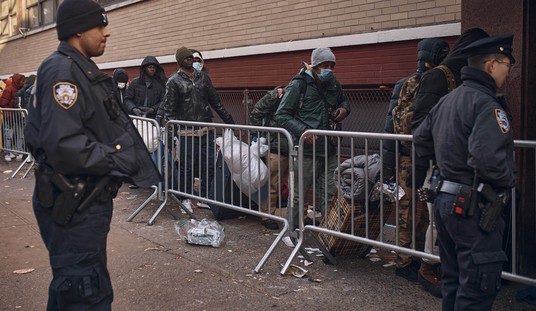Let’s start the day with an optimistic take on Omicron. I’ll do a pessimistic take later. After all, as an Eeyore, I have a reputation to uphold.
It feels silly to still be reading tea leaves from South Africa about the severity of the new variant when an Omicron outbreak is now in full swing right here in the U.S. If we want to know how lethal it is or not, all we have to do is wait three weeks. The daily numbers of hospital admissions and deaths in New York City will tell us definitively.
Here’s the case curve in the NYC metro area, where suddenly everyone seems to have COVID. Away we go:

South Africa is a month or so ahead of us. This morning health officials there that the promising early trend in severe illness during the recent wave has continued. Hospitalizations during the Omicron are down relative to the previous Delta wave. And not by only a little bit either:
Only 1.7% of identified Covid-19 cases were admitted to hospital in the second week of infections in the fourth wave, compared with 19% in the same week of the third delta-driven wave, South African Health Minister Joe Phaahla said at a press conference…
Currently there are about 7,600 people with Covid-19 in South African hospitals, about 40% of the peak in the second and third waves. Excess deaths, a measure of the number of deaths against a historical average, are just below 2,000 a week, an eighth of their previous peak…
The number of Covid-19 hospitalizations in this wave is also being inflated by the fact that milder patients are being admitted because there is room to accommodate them. Many are there for other complaints but are routinely tested, according to health officials.
The case curve in South Africa is scary…

…but the death curve is not:

The country averaged fewer deaths yesterday than it did on November 10, around the time Omicron began spreading in earnest. The standard caveat applies here: Deaths lag cases by several weeks so it’s possible that a death wave is coming. But the more time passes without a spike, the less likely that spike becomes. Especially given what local officials are seeing with hospitalizations.
Finally, what we've been waiting for: age-controlled data on Omicron severity, courtesy SA health ministry.
Across all ages, deaths among hospitalized pts are 2/3 lower in Omicron wave.
If more mild cases are admitted, this # goes down, but doesn't seem likely that's the reason pic.twitter.com/BRDY8BQyCZ
— Michael Lin, PhD-MD 🧬 (@michaelzlin) December 17, 2021
FUNDSTRAT: “Policymakers will worry about Omicron,” but in South Africa, “.. oxygenated patients is broadly declining .. ventilated is still falling .. ICU is falling .. deaths are mostly falling ..” @fundstrat pic.twitter.com/ooNx8DgIGU
— Carl Quintanilla (@carlquintanilla) December 17, 2021
Look again at that top tweet. Even very old South Africans are much less likely to need hospital care for Omicron.
It’s not just hospitalizations. There’s also evidence that cases have peaked in Gauteng province, South Africa’s Omicron hot spot, and are on their way down. Scientists there are performing the same wastewater inspections that are happening in Florida to gauge the scope of the local outbreak. Quote: “A wastewater analysis carried out by the South African Medical Research Council for the week ended Dec. 10 showed a declining proportion of viral particles for two successive weeks at the plant that treats water draining from central Pretoria.”
The wave in Gauteng appears to be over so quickly that Scott Gottlieb is having trouble figuring out what’s going on. Was there a wave already raging when South African scientists first identified Omicron last month? Or does the new variant really peak and fade as quickly as it appears to?
Clear evidence that covid cases have peaked in #Gauteng province in South Africa suggests we don’t fully understand epidemiology of this variant. The very rapid rise and then decline in cases suggests many possibilities, including that we’re missing a lot of subclinical infection pic.twitter.com/7FlOZ2p1Ga
— Scott Gottlieb, MD (@ScottGottliebMD) December 17, 2021
Maybe the illness is so mild that millions of people in Gauteng had it in October and early November and assumed that it couldn’t be COVID because they weren’t having difficulty breathing. Only after the country’s health authorities identified Omicron and announced their findings to the world might locals have put two and two together and started lining up for tests. That is, maybe we’re only seeing the back end of a longer, broader wave over the past month. Which would be great news: An illness that’s so mild that the people who have it routinely mistake it for something other than COVID is a pretty mild illness.
In fact, here’s an interesting headline from the middle of November: “Scientists detect unseasonal flu in South Africa.” Since August, it seems, the country had experienced an uptick in flu cases. Some of those cases really were influenza and were sequenced as such by local experts. But it makes me wonder if Omicron was spreading in parallel and many who got infected by it simply chalked it up to the flu without getting tested, having heard the news about a flu outbreak.
And so we arrive at a rare moment of hope during the pandemic. Could Omicron … be a good thing?
COVID-19 death rates across South Africa also have fallen precipitously despite the Omicron wave. If there is no massive surge in hospitalizations or deaths in the next two to three weeks, that “may well mark [a] turning point in [the] pandemic,” Dr. Shabir Madhi, an infectious-disease expert at the University of the Witwatersrand, wrote on Twitter.
A variant that combines high transmissibility with greatly reduced virulence would be welcomed by many scientists. If an infection with Omicron is unlikely to make a patient severely ill but leaves some immunity in its wake, it could act as a “natural vaccine,” said Dr. Bruce Walker, an immunologist and founding director of the Ragon Institute in Cambridge, Mass.
It could be the beginning of the end.
“A lot of people have talked about a ‘return to normalcy’ over the last few years,” Nate Cohn tweeted this morning. “It’s hard to think of what would do more to nudge COVID toward normalcy than a widespread sense that exposure/infection is at once inevitable, and not as scary as it once was.” That’s the dream. Anyway, back soon with a more Eeyore-ish take.








Join the conversation as a VIP Member